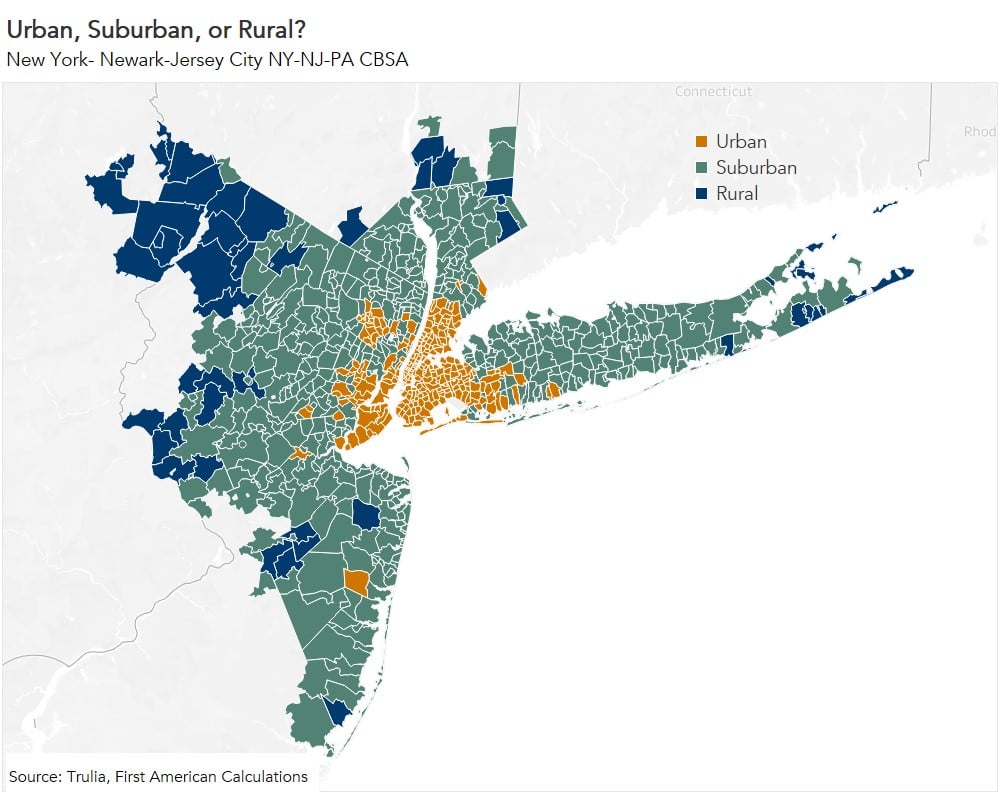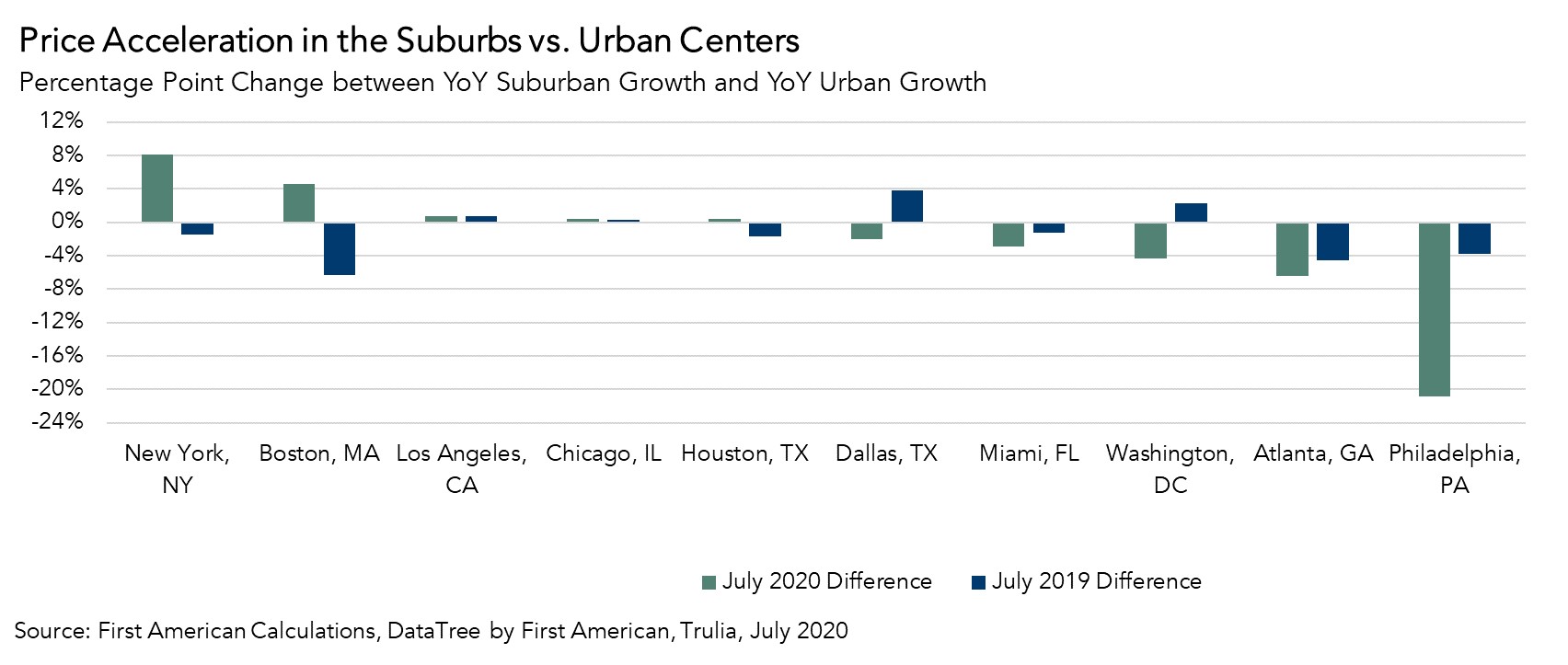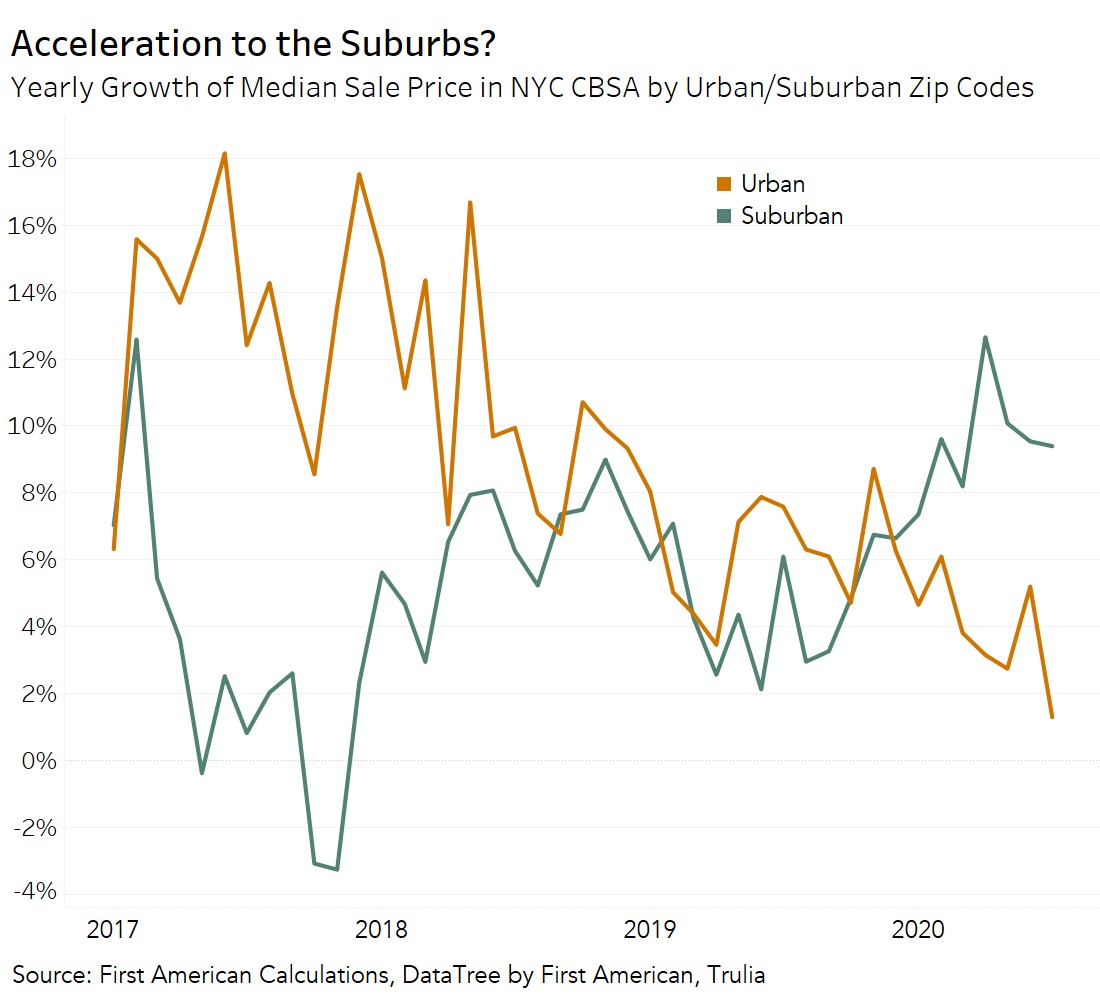Several reports indicate that the pandemic has triggered a mass flight from urban centers to the suburbs. It’s true that a move to the suburbs usually offers more space for telework and stay-at-home activities. But, as millennials have been aging into the key lifestyle decisions associated with a greater likelihood of purchasing a home (marriage and family formation), many have already made the shift to the suburbs. We sought out to see if the data confirms that the pandemic has accelerated that trend.
“While our analysis may not yet confirm the widely discussed pandemic-driven sprint to the burbs, faint signals of a jog are picking up pace.”
Using data from DataTree by First American, we analyze median sales price growth in nearly all zip codes in the United States. Home sale price growth is one indicator of growing demand. To help identify how demand trends are changing over time within urban, suburban and rural zip codes, we broke out home sale price growth data according to Trulia’s urban/suburban/rural zip code definition that is largely based on the number of households per square mile. For example, the New York-Newark-Jersey City core-based statistical area (CBSA) classified by urban, suburban, or rural zip codes is shown below.

Acceleration to the Suburbs?
In July 2019, annual median home sale price growth was greater in suburban zip codes compared with urban zip codes in four of the top 10 metropolitan areas in the U.S. as measured by population. By July 2020, annual median sale price growth was greater in suburban zip codes relative to urban zip codes in five of the top 10 markets. In 2019, within the markets where suburban zip codes outpaced the urban, the average difference was 1.8 percentage points. That difference increased to 2.8 percentage points in 2020 -- most of that driven by New York City. While this trend suggests an acceleration to the suburbs, it is important to note that median sale price changes can also be caused by changes in the overall mix of homes being sold, rather than reflecting true value changes. For example, if greater numbers of higher priced homes were sold, the median sale price would increase.

New York City is considered emblematic of the ‘flock to the suburbs’ phenomenon. But, New Yorkers leaving the city for the suburbs is not a new phenomenon. As home buyers begin to prioritize strong public schools and more space for their families, demand for the suburbs grows. As employers in New York implemented work-from-home policies in response to the coronavirus, it’s possible that the need for more space for telework accelerated the move to the suburbs for many New Yorkers who were already considering the move prior to the pandemic.
The chart below shows the year-over-year growth of median sale prices in the New York City CBSA, split up by suburban and urban zip codes. It’s clear that median sale price appreciation in suburban zip codes outpaced that of urban zip codes starting in December 2019. By July 2020, annual median sale price growth in suburban zip codes reached 9 percent, compared with only 1 percent in urban zip codes. The average gap between suburban versus urban house price growth favored suburban zip codes by 1 percentage point in the five months preceding the pandemic. But, as the pandemic took hold, the gap intensified, favoring suburban zip codes by 7 percentage points from March through July. If the trend persists or strengthens, it may be enough to prove the pandemic accelerated the shift to the suburbs.

Just a Faint Signal for Now
Our study does not conclusively prove that suburban housing markets have strengthened at a disproportionally rapid pace compared with urban markets due to the pandemic. It is difficult to prove without an “all else held equal” analysis. Increasing house price appreciation in suburban zip codes points to higher demand relative to supply in the suburbs but does not necessarily indicate what’s fueling the demand. We’ll explore these dynamics and more on our next episode of the REconomy podcast. It is worth noting that homebuilder activity often reflects home buyer demand, and the National Association of Homebuilders recently found that single-family home construction grew fastest in small metro suburbs during the second quarter of 2020. While our analysis may not yet confirm the now widely discussed pandemic-driven sprint to the burbs, faint signals of a jog are picking up pace.



